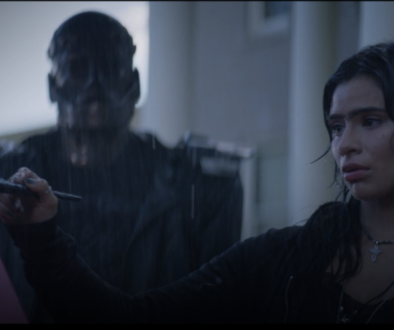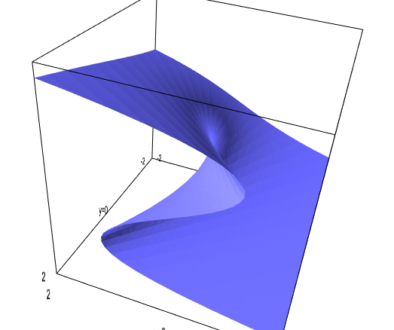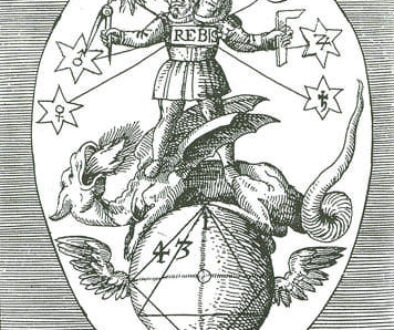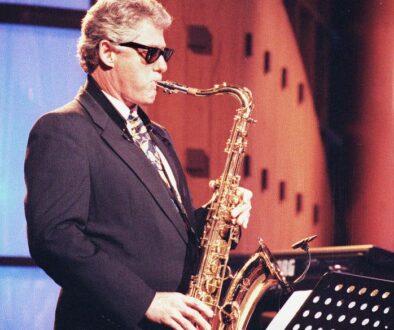The Comedian Is Dead (The Last War in Albion Part 28: Alan Moore’s Earliest 2000 AD Work)
This is the fourth of ten parts of Chapter Five of The Last War in Albion, covering Alan Moore’s work on Future Shocks for 2000 AD from 1980 to 1983. An ebook omnibus of all ten parts, sans images, is available in ebook form from Amazon, Amazon UK, and Smashwords for $2.99. If you enjoy the project, please consider buying a copy of the omnibus to help ensure its continuation
Most of the comics discussed in this chapter are collected in The Complete Alan Moore Future Shocks.
Moore’s Rogue Trooper work is altogether more somber affair. The first, “Pray for War,” tells of Gunnar having to kill another soldier who calls himself “Pray for War” because, as he says,“war is the best thing that ever happened to me” and “combat is what makes me happy,” ending with Rogue reassuring Gunnar that “you only killed part of him – the ugly part. The war killed any humanity left in him long ago.” The second, “First of the Few,” involves Rogue finding one of the abandoned prototypes of the Genetic Infrantrymen, who he allows the mercy of death, actively declining to lead his consciousness into his gun or helmet. Both are straightforward anti-war stories; “First of the Few” describes the hellish world of Nu Earth, “the ultimate monument to war. The land is scorched bare and the air is a poisonous soup,” Moore writes with obvious relish, crafting a dour and pleasureless war story that subverts the genre.
 |
| Figure 210: Hammerstein’s somber reflections over the grave of a Martian animal (2000 AD Annual ’85, 1984) |
 |
| Figure 211: A classic twist ending page from the first installment of Tharg’s Future Shocks (From “King of the World,” in 2000 AD #25, written by Steve Moore, art by Blasquez, 1977) |
 |
| Figure 212: A classic horrific twist ending from EC Comics, as narrated by the Vault Keeper (From “Gone… Fishing!,” written by Al Feldstein, art by Jack Davis, Vault of Horror #22, 1951) |
| Figure 213: Sundodger, the protagonist of Alan Moore’s first short story for 2000 AD (Issue 170, 1980) |
 |
| Figure 214: At the end of 1981, Moore contributed a glossary of trucker lingo to the BJ and the Bear annual. |
The strip is a straightforward adventure story with a small twist pinned onto the end, but its craftsmanship runs deeper than its unremarkable surface features. Structurally, the strip is a procedural – the action focuses on Sundodger and the Andromeda Angel figuring out how to retake Sundodger’s rig, and on the technical steps taken to accomplish this. But given that this is a procedural based around an entirely fictive world – there are not, in fact, space trucks on remote, dead planets – this is no mean feat. Moore has to simultaneously introduce the rules of the space trucking world and show Sundodger and the Andromeda Angel figuring out how to work within those rules. The mechanism of having Sundodger have to explain everything he sees and is doing to the absent Andromeda Angel goes a long way towards making that easy, and it’s by no measure a subtle or nuanced accomplishment, but there’s an impressive grasp of storytelling here, and the entire exercise is entertainingly enlivened by Moore’s thick use of trucker dialect – a body of knowledge he’d put to use a year or so later when he contributed two pieces to the 1982 BJ and the Bear Annual.
| Figure 215: Myron Fooble is plagued by the angry yet amorous advances of his newly feral toothbrush. (From “The Dating Game,” written by Alan Moore, art by Dave Gibbons, 2000 AD #176, 1980) |
While “The Dating Game” can’t be called a great story, it at least makes a point of coming to a humorous ending where the joke makes sense, and gets decent mileage out of its premise until then. It tells the story of Myron Fooble, who seeks romance via a dating agency only to have the agency match him up with the central city computer, which controls every aspect of the city. Fooble eventually spurns the computer, which promptly becomes a jilted and homicidal ex, trying to run Fooble down with automated taxi cabs and scald him in the shower. “Every machine in the city is after my blood,” he laments. “Even my electric toothbrush,” which proceeds to bounce towards him, growling. Eventually he flees the city to become a scavenger, only to be eaten by a computerized litter bin. “True love may never run smooth,” Ro-Jaws reflects, “but atomic-powered stainless steel garbage grinders certainly do.” It’s a simple strip, and indeed a faintly misogynistic one, trading as it does on the stereotype of women as irrationally and violently jealous, but, notably unlike “The Robo-Shrink,” it demonstrates a basic coherence to its storytelling. That this should be something that immediately puts Moore ahead of the pack says, as Moore readily suggests in countless interviews, more about the unfortunate state of British comics in 1980 than it does about Moore’s skills. Nevertheless, it’s clear even at this early stage that Moore is a rising talent.
 |
| Figure 216: One of Alan Moore’s several engagements with Space Invaders (Maxwell the Magic Cat, Alan Moore [as Jill de Ray], 1983) |
The most notable thing about “The Dating Game,” however, is that it marks the first collaboration between Alan Moore and Dave Gibbons. Gibbons was a long-time veteran on 2000 AD, having made his debut in the first issue as the artist on Tom Tully’s Harlem Heroes. Since then he bounced around the magazine, drawing a slew of Dan Dare strips, a couple of Judge Dredds, and various Future Shocks. Like Brian Bolland, Gibbons’s style is characterized by an intense level of detail and an exceedingly clean line. Where Bolland specializes in the grotesque, however, Gibbons’s strength is, as Moore cheekily puts it, that he was “prepared to draw whatever absurd amount of detail you should ask for, however ludicrous and impractical.” It is not merely his willingness, however, but his skill at it – the cleanliness of Gibbons’s line-work makes the absurd depths of detail crystal clear. On 2000 AD, at least, Moore mostly used this talent for humorous effect. Of their half-dozen collaborations, four came in a period from May to July of 1982 shortly after Gibbons left Gerry Finley-Day’s Rogue Trooper. All of these four were two-page jokes, often with straightforward punch lines. “Skirmish,” for instance, depicts a group of alien invaders being cut to ribbons by human defenders with “terrible weapons that make such a ridiculous noise,” which turn out to be the machinations of a kid playing Space Invaders. (Space Invaders is actually a recurring theme in Moore’s work around this time – the game features in a joke in the fourth Abelard Snazz strip, and in a Maxwell the Magic Cat strip, all in the 1982-83 period when the game was at its most popular. [This strip is one of several Maxwell the Magic Cat strips to use recycled punchlines from Moore’s Future Shocks. A month or two earlier he did a strip in which an ET-like alien is squashed by Maxwell when it is revealed to be only four centimeters tall. This is the same basic punchline as the June 1982 Future Shock “The Big Day,” in which aliens prophesizing the return of their gods are crushed by said gods, which turn out to be the American moon landing, which dwarfs the microscopic aliens.] This makes it the only video game to get any sort of attention from Moore save for an appearance by Pac-Man in the penultimate Maxwell the Magic Cat. This information surely allows a dedicated researcher to track the precise progression of what arcade machines some pub in Northampton owned during the mid-1980s.)
 |
| Figure 217: The Clone Ranger dispatches Billy the Squid (“The Wild Frontier,” written by Alan Moore, art by Dave Gibbons, 2000 AD #269, 1982) |
These strips culminate in “The Wild Frontier,” a story that demonstrates straightforwardly how Gibbons’s art style lends itself to Moore’s style of comedy. Moore describes the strip as “one of those stupid things you do when you hear that Dave Gibbons will be drawing a job.” “The Wild Frontier” is a two-page bit of larking about on the premise of a space-western, complete with jokes about “the octobanndits led by that cephalopod sidewinder… Billy the Squid!” and the Clone Ranger, a vast stampede of identical masked men with their catchphrase of “Hiyoo, Chromium! Hawaay!” [continued]





January 23, 2014 @ 4:03 pm
Grand stuff, as usual. I always look forward to Thursdays. As soon as I can get some money into Paypal I plan to buy the collected versions.
January 23, 2014 @ 5:36 pm
The synopsis of "Killer in the Cab" sounds a bit like Harlan Ellison's "Life Hutch."
January 23, 2014 @ 5:49 pm
And the recycled Space Invaders plot seems reminiscent of the fate of the Vl'Hurg/G'Gugvuntt armada in Hitchhiker's Guide.